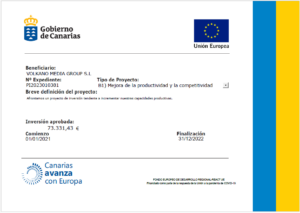Net present value (NPV) is the difference between the present value of cash inflows and the present value of cash outflows over a period of time. By contrast, the internal rate of return (IRR) is a calculation used to estimate the profitability of potential investments. Sam’s purchasing of the embroidery machine involves spending money today in the hopes of making more money in the future. Because accelerated depreciation for business tax savings the cash inflows and outflows occur in different time periods, they cannot be directly compared to each other. Instead, they must be translated into a common time period using time value of money techniques. By converting all of the cash flows that will occur from a project into present value, or current dollars, the cash inflows from the project can be compared to the cash outflows.
Net Present Value (NPV): What It Means and Steps to Calculate It
Net Present Value is an accounting calculation that’s used to help make decisions about investments. It’s more useful than some other investment indicators because it takes the ‘time value of money’ into account. For example, if you can’t https://www.business-accounting.net/ be confident that you’ll get all of the cash flows you assume in the NPV calculation, it may make sense to pass on some opportunities. IRR is typically used to assess the minimum discount rate at which a company will accept the project.
Modified internal rate of return
To learn more, check out CFI’s free detailed financial modeling course. Let’s look at an example of how to calculate the net present value of a series of cash flows. As you can see in the screenshot below, the assumption is that an investment will return $10,000 per year over a period of 10 years, and the discount rate required is 10%. It is broadly based on assumptions that can have a material, if not even game-changing, effect on the results.
How to Calculate Net Present Value in Excel and Sheets
To illustrate the concept, the first five payments are displayed in the table below. This section contains 2 examples, aiming toillustrate the application of NPV calculations to real-life situations. Thefirst example comprises the comparison and selection of different project options.The second example elaborates on the use of perpetuities for infinite series ofcash flows. Discount the net cash flows of each period,following the abovementioned formula. Use the interest rate determined in step3 and discount the residual value that you have calculated in the previousstep. However, it is arguable whether these costsare classified as a negative residual value or a negative cash flow/cost in thedetailed forecast.
Assumptions and Estimates
This means the discounted value of the investment’s future cash flows is less than the initial capital invested. In the basic version of the NPV computation– which is usually applied for rough projections in early stages of a project –the discount rate remains constant for all periods and for all kinds of cashflows. It often represents the organization’s target return on investments orweighted average cost of capital (WACC).
Determine the Discount Rate
If the cash inflows exceed the cash outflows in present value terms, the project will add value and should be accepted. The difference between the present value of the cash inflows and the present value of cash outflows is known as net present value (NPV). If the net present value of a project or investment, is negative it means the expected rate of return that will be earned on it is less than the discount rate (required rate of return or hurdle rate).
Once you have completed thisgranular forecast, proceed with the next step. Possible techniques include but are notlimited to the extrapolation of past market value developments, the use ofcertain depreciation rules/curves or the expected future book value. Juan Gabbaro discusses how product leadership should drive vertical alignment, but the product team should drive cross-functional alignment. Failing to identify or understand a problem is, when it boils down to it, the main reason why most businesses fail. Today’s topic is all about net present value (NPV), the heavyweight champion of financial analysis.
When you have multiple product development options, you can use NPV to compare the expected profitability of each option. It allows you to choose the option that is expected to generate the highest return on investment. IRR is useful when you are comparing investments with different expected cash flow patterns as it directly incorporates the time value of money. Additionally, it is good to carefully consider and continuously review the assumptions you use to generate the cash flow projections and the discount rate to ensure they are reasonable and accurate. Because the NPV is negative, this project is not expected to generate a return greater than the required rate of return (11 percent).
Most financial analysts never calculate the net present value by hand or with a calculator; instead, they use Excel. To understand this definition, you first need to know what is the present value. It means that you need to put $2000 on that account today to have $2200 twelve months from now.
- The period from Year 0 to Year 1 is where the timing irregularity occurs (and why the XNPV is recommended over the NPV function).
- But this is still considered a positive NPV, and indicates that the investment opportunity is worthwhile.
- The articles and research support materials available on this site are educational and are not intended to be investment or tax advice.
- A higher discount rate will result in a lower NPV, while a lower discount rate will result in a higher NPV.
- Our goal is to deliver the most understandable and comprehensive explanations of financial topics using simple writing complemented by helpful graphics and animation videos.
The second example is an investment with aperpetuity as the residual value – a real estate investment, for instance. For all 3 cases, the software is expectedto be replaced at the beginning of year 7 (i.e. immediately after year 6, theend of this projection) with no residual value. If it is intended to sell an asset at afuture point in time, it is reasonable to include the forecasted market valuein the NPV calculation. The future market value or salvage value needs to beestimated for this purpose. These parameters are determined by certainestimates and assumptions which are discussed in the following section. In general, to get a more comprehensive understanding of the financial viability of an investment, don’t feel ashamed to use both metrics together.
Prior to accepting a position as the Director of Operations Strategy at DJO Global, Manu was a management consultant with McKinsey & Company in Houston. He served clients, including presenting directly to C-level executives, in digital, strategy, M&A, and operations projects. Typically, investors and managers of businesses look at both NPV and IRR in conjunction with other figures when making a decision. If you want to calculate IRR using Excel, you can use the IRR function.
11 Financial’s website is limited to the dissemination of general information pertaining to its advisory services, together with access to additional investment-related information, publications, and links. Get instant access to lessons taught by experienced private equity pros and bulge bracket investment bankers including financial statement modeling, DCF, M&A, LBO, Comps and Excel Modeling. Take your learning and productivity to the next level with our Premium Templates.
In the book, he claimed that the true value of an asset was the present value of the asset’s future generated income. If, on the other hand, an investor could earn 8% with no risk over the next year, then the offer of $105 in a year would not suffice. Another problem with using the IRR to evaluate a project is that it assumes that any and all interest payments or dividends are reinvested in the project. However, the company making the investment may want to take these dividends and pay them to the shareholders instead of reinvesting them. «Once the IRR is obtained, it’s compared to the hurdle rate in order to determine if the project is viable,» Garza says. «If the IRR is higher than the hurdle rate, then the project adds value.»
However, investors should keep in mind that IRR has its limitations, so they should use it along with other financial metrics, for example NPV, before making any decisions. This article will introduce the net presentvalue, its formula as well as the required assumptions. This includes thedifferent components and pros and cons of this indicator and is furtherillustrated with 2 comprehensive examples. Thus, you will be able to apply theNPV in a sensible way when you compare different investment and project alternatives and when you present them to your stakeholders. NPV can also help you to determine the optimal price point for your product. By estimating the present value of cash inflows at different price points, you can choose the price point that is expected to maximize NPV and thus your profitability.
Any predictions about money you’re going to make in the future must allow for this decreased cash value and how it compares to initial investment. It’s an important part of figuring out the Return On Investment (ROI) of a new project or investment. Below is a short video explanation of how the formula works, including a detailed example with an illustration of how future cash flows become discounted back to the present. You can use our NPV calculator in advanced mode to find the net present value of up to ten cash flows (investment and nine cash inflows).
By discounting future cash flows to their present value, NPV helps in making informed choices, ensuring that undertaken projects contribute positively to the overall financial health and growth. NPV accounts for the time value of money and can be used to compare the rates of return of different projects or to compare a projected rate of return with the hurdle rate required to approve an investment. No matter how the discount rate is determined, a negative NPV shows that the expected rate of return will fall short of it, meaning that the project will not create value. The discount rate is a rate used to determine the current value of future cash flows (AKA the NPV or net present value). A discount rate could represent some sort of opportunity cost or risk rating. The discount rate is OFTEN based on a company’s weighted-average cost of capital (WACC… click HERE for the definition).
It is commonly used because it takes into account cash inflows, cash outflows, and the time value of money. The next table contains discounted cashflows for each period and each option. They are calculated using the abovementionedformula, with the results summarized in the following tables. When you are using this result for your stakeholder communication, make sure that you do not only present the calculated figure but also its underlying assumptions.




